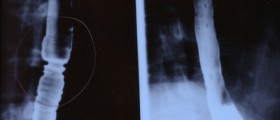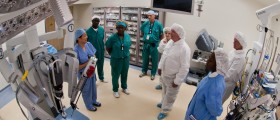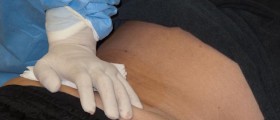
In many cases of esophageal cancer, surgery is the main initial treatment for solid tumors. Like other invasive treatment options, the main purpose of surgery is to remove all Removable cancerous tissues.
When it comes to esophageal cancer, the surgical procedure called esophagectomy is performed to remove as much of the cancerous tissue as possible. Parts of the esophagus may have to be removed, depending on the extent of the disease.
Other invasive procedures for esophageal cancer are considered palliative, because their goal is to relieve the symptoms in situations when cancer cannot be cured. Those procedures include placing a feeding tube after the esophagus shuts down and maintaining a channel through it.
About esophagectomy
Esophagectomy is a surgical procedure to remove completely all the cancerous portions of the esophagus, as well as any parts of the tissue of the associated structures that may contain cancerous cells. This is not a procedure that is frequently performed. In fact, in 60 percent of the cases it is not considered as an option because by the time the diagnosis is made the patient is already in such weakened state that he or she is at great risk of not surviving the surgery. In addition, this surgery is often unsuccessful and has a high mortality rate.
During the procedure, the chest and the upper abdomen must be exposed and, since the esophagus lies in the back of the chest, the heart and other organs in the chest cavity have to be moved out of the way so the esophagus can be reached.
If the surgeon, upon exposing the esophagus, decides that the cancerous parts can be safely removed, he or she will first identify those tissues, which often involve the entire esophagus. The removed parts can be bypassed by attaching the stomach up to the esophagus, above the cancer, or by using synthetic tubes.
Any other organ or tissue portion that contains cancerous cells will be removed as well.
Complications of esophagectomy
There are many possible complications from this surgical procedure and many of them are very dangerous. This is why esophagectomy is considered a risky procedure and it is only performed if there are no other options. Doctors always make sure to explain all the risks and possible complications to the patient, so he or she can accept the procedure at his or her own responsibility.
The most important complication of this procedure is fatal outcome, which may occur due to the patient’s weakened state and bad overall health. Complications may also include adverse reactions to the anesthesia or to other drugs used before, during or immediately after the procedure, bleeding and severe infections.
Leakage from surgical connections is also possible and it is always very serious. Subdiaphragmatic abscess or pus beneath the diaphragm is one possible result of the leakage and requires another surgery to repair it. Anastomotic fistula is a similar and equally serious complication.
- medlineplus.gov/ency/article/007397.htm
- medlineplus.gov/ency/article/000283.htm
- Photo courtesy of Hendrik Schröder Universitätsklinikum Heidelberg by Wikimedia Commons: commons.wikimedia.org/wiki/File:Beat_M%C3%BCller_bei_laparoskopischen_%C3%96sophagektomie.jpg

















Your thoughts on this
Loading...